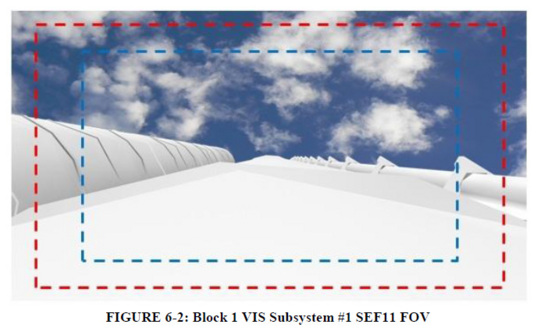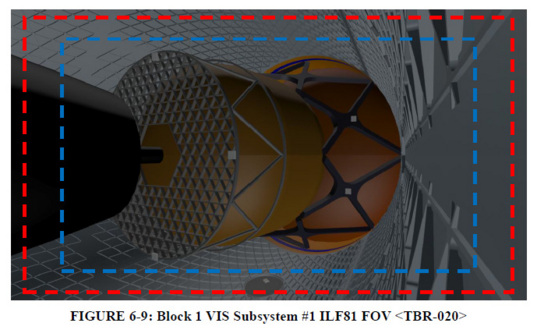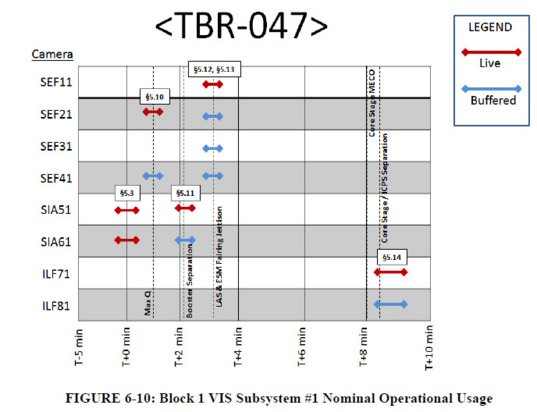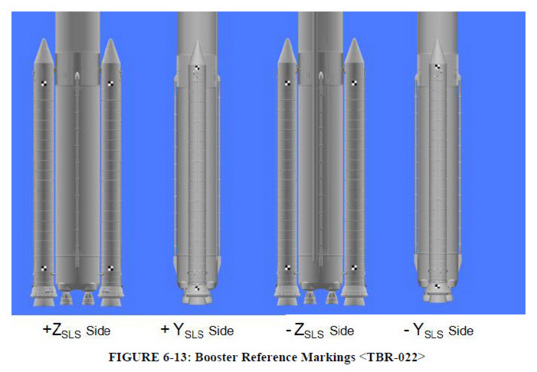Jason Davis • Jul 09, 2013
In-flight entertainment: cameras aboard the Space Launch System
NASA is in the midst of a preliminary design review for the Space Launch System, the heavy-lift rocket slated to carry the Orion crew capsule into deep space. The review, or PDR, is a multi-week analysis of the vehicle design, bringing together contractors, engineers and NASA centers to determine if any large-scale problems exist. The review is expected to conclude sometime this summer.
At the center of the PDR is a library of documents called a data pack. At this point in the rocket's life cycle, the data pack doesn't contain detailed specifications on where each nut and bolt should go. Instead, they describe things like how NASA should procure the nuts and bolts, who is responsible for checking their quality, and the reasons the SLS should have them.
According to Judi Hollingsworth, a Marshall Flight Center FOIA (Freedom of Information Act) liaison, there are at least 238 documents in the PDR data pack, with most containing upward of 50 pages—about 12,000 total pages. Some of these documents aren't fit for public consumption because they contain proprietary information owned by commercial contractors. Others are export controlled, meaning the U.S. government would prefer they aren't distributed to foreign countries.
To give you an idea of what's in some of these PDR documents, I thought it would be fun to dig into one cleared for release. Remember how exterior engineering cameras allowed us to take wild rides on the Space Shuttle's solid rocket boosters? The SLS will have a similar imaging system. It's not for entertainment purposes, of course—this system allows ground controllers to closely monitor the rocket's health during ascent. Also, we have to remember that this is a preliminary design document, meaning things could change.
The camera system is officially called the SLS Vehicle Imagery System, or VIS. It is described in document SLS-SPEC-167, "Space Launch System Program Imagery System Requirements Document (ISRD)." Here is a diagram showing where cameras will be placed:
I immediately noticed there are no cameras on the solid rocket boosters. That's probably because unlike the shuttle's solid rocket boosters, SLS boosters are not designed for recovery. Still, I can't help imagine how cool it would be to see the ocean rushing up to meet the boosters as they careen back to Earth.
There will be four forward-facing cameras mounted near the base of the rocket near a component called the Outer Mold Line, or OML. They are identified as:
SEF11: Stages Engine Section Forward Looking camera #1
SEF21: Stages Engine Section Forward Looking camera #2
SEF31: Stages Engine Section Forward Looking camera #3
SEF41: Stages Engine Section Forward Looking camera #4
Here's an example of what they will see:
SEF11's purpose is "general vehicle integrity monitoring during ascent, as well as, potential re-contact or near misses by the ESM (Encapsulated Service Module) fairing after ESM fairing jettison, and image the Core Stage OML for potential re-contact or near misses by the LAS (Launch Abort System)."
Basically, these cameras make sure the ESM—the payload fairing that covers the service module—and the launch abort tower don't whack the SLS when they are jettisoned.
The next two cameras are rear-facing, mounted near the top of the core stage:
SIA51: Stages Intertank Aft Looking camera #5
SIA61: Stages Intertank Aft Looking camera #6
Here's an example of what they will see. Both the forward and aft-facing cameras appear to be showing clouds—we can assume either a generic background was used in the rendering, or that the forward view was taken before the SLS passed through clouds, with the aft view taken afterward.
These cameras will "image the RH (right) or LH (left) booster forward and aft attach points on the -Z side of the Core Stage. The camera configuration will image the SLS during ignition through tower clear to monitor the liftoff and early stage of ascent of the SLS. The camera configuration will image the attach points prior to booster separation, and monitor the position of the struts relative to the Core Stage as the separated booster moves in the -Z direction immediately following separation."
In other words, these are the two cameras that will keep an eye on the attach points for the boosters, and watch them tumble away after separation.
The final two cameras will be mounted inside the ISPE LVSA (Integrated Spacecraft & Payload Element Launch Vehicle Separation Adapter). We're talking about the cone-shaped piece that sits on top of the core stage and protects the upper-stage engine and engine bell. These cameras are:
ILF71: ISPE LVSA Forward Looking camera #7
ILF81: ISPE LVSA Forward Looking camera #8
Here's what they see:
These cameras will "image the clearance between the ICPS (Interim Cyrogenic Propulsion Stage, a modified Delta IV upper-stage engine that will stand in for the J-2X during initial SLS flights) engine bell and umbilical arm. The camera will also image the clearance between approximately 60% of the external aft circumference of the ICPS engine bell (-Z side) and approximately 60% of the internal forward circumference of the LVSA (-Z side) at the LVSA/ICPS interface during the ICPS separation event from initiation of the separation until the ICPS engine bell is clear of the LVSA opening."
That's a mouthful, but all you really need to know is that these cameras are placed to watch the upper stage slip gracefully out of the LVSA at core stage separation.
So, now we know where all the cameras are. Will we get to see any of their views in real-time? Yes, according to this chart:
It looks like there will be a live feed coming from both aft-facing exterior cameras during liftoff. At Max Q, when the SLS experiences the most extreme aerodynamic forces, one of the forward-facing cameras will be live, and at booster separation, the live view will switch back to the aft camera. We go back to a forward camera during LAS and ESM jettison. Finally, at core stage separation, the cameras inside the LVSA will be live.
The chart shows gaps in coverage, but the document goes on to say "a minimum of one live (e.g., near real-time) view will be transmitted to Core Stage for downlink during all times after the VIS subsystem #1 is in a flight operational state." It also says this figure "does not preclude the system for providing more imagery other than what is shown." In other words, at least one camera will always be providing a live feed, and it sounds like all cameras might roll throughout the flight to provide footage to be downlinked later.
In addition to the onboard cameras, there will, of course, be ground-based tracking cameras. To assist with tracking, the SLS will have reference markings on the core stage, boosters and ISPE. These black and white checkerboards range from 6 to 36 square inches and will also be used by some of the onboard cameras.
Here's where the reference markings will be positioned on the core stage:
And here's where they reside on the boosters:
With that, I'd say we have reached saturation on the SLS Vehicle Imagery System. Hopefully this gives you an idea of what lies within the 12,000 pages engineers are scrutinizing during the preliminary design review.
Support our core enterprises
Your support powers our mission to explore worlds, find life, and defend Earth. You make all the difference when you make a gift. Give today!
Donate

 Explore Worlds
Explore Worlds Find Life
Find Life Defend Earth
Defend Earth








